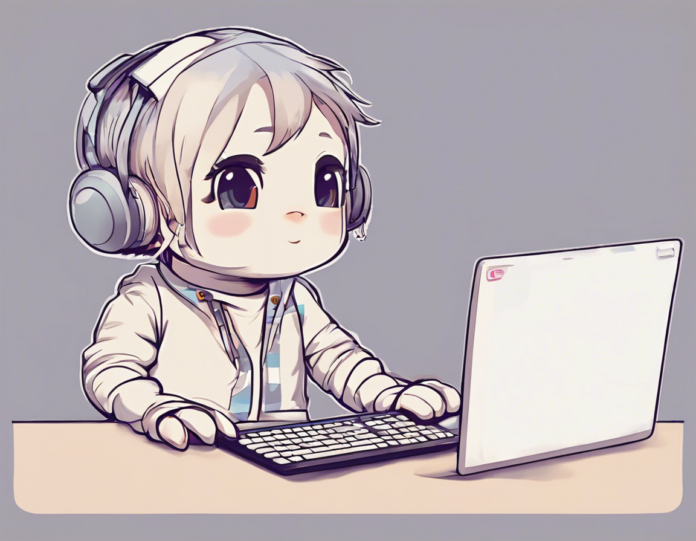In the dynamic and ever-evolving world of technology, the image of a programmer typically conjures up visions of individuals deeply engrossed in lines of code, debugging software, and troubleshooting complex technical issues. However, in recent years, a new trend has emerged within the coding community – the rise of the "cute programmer." This phenomenon signifies a blend of coding expertise with a keen sense of aesthetics, creativity, and personal style. The integration of cuteness into the traditionally serious realm of programming has sparked a wave of interest and discussion among tech enthusiasts and industry professionals alike.
Embracing Cuteness in Coding
Integrating cuteness into programming may seem like an unlikely combination at first glance, but upon closer examination, it becomes evident that these seemingly disparate elements can harmonize in intriguing and innovative ways. The concept of cute programming transcends merely visual aesthetics and encompasses a broader approach that includes elements such as user-friendly design, engaging interfaces, and playful interactions.
The Psychology of Cuteness
The appeal of cuteness is deeply rooted in human psychology. Studies have shown that exposure to cute images or characters can evoke feelings of affection, care, and happiness. This emotional response can have a profound impact on user experience and engagement in various digital products and applications. By infusing elements of cuteness into the design and development process, programmers can create more inviting and enjoyable digital environments for users.
Balancing Coding and Cuteness
For programmers looking to incorporate cute elements into their work, finding the right balance is key. Striking a harmonious chord between functionality and aesthetics requires a thoughtful and intentional approach. Here are some tips for balancing coding and cuteness effectively:
1. User-Centric Design
Prioritize user experience by incorporating cute design elements that enhance usability and accessibility. Consider factors such as color schemes, typography, iconography, and animations to create a visually appealing interface that delights users.
2. Consistent Branding
Maintain consistency in branding by integrating cute elements that align with your brand identity and messaging. Ensure that the overall design reflects the core values and personality of your brand while incorporating playful touches that resonate with your target audience.
3. Simplicity and Clarity
While adding cute elements can enhance the visual appeal of your project, it's essential to maintain simplicity and clarity in your design. Avoid overwhelming users with excessive animations or graphics and strive for a clean and intuitive interface that facilitates seamless navigation.
4. Personal Expression
Express your individuality and creativity through your coding projects by infusing them with elements that reflect your unique style and personality. Whether it's incorporating cute illustrations, quirky animations, or whimsical microinteractions, let your work showcase your personal flair.
5. Collaboration and Feedback
Seek input and feedback from peers, colleagues, and users to gain valuable insights into how your cute programming elements are being received. Collaboration can offer fresh perspectives and ideas for refining your design approach and ensuring that your cute elements resonate with your audience.
FAQs:
1. How can I incorporate cuteness into my coding projects without compromising functionality?
Balancing cuteness and functionality involves prioritizing user experience, maintaining consistency in branding, simplicity in design, expressing personal creativity, and seeking feedback from others.
2. What are some examples of cute programming elements that I can integrate into my projects?
Examples of cute programming elements include playful animations, colorful illustrations, whimsical icons, creative microinteractions, and engaging user interfaces.
3. How does the psychology of cuteness impact user engagement in digital products?
The psychology of cuteness can evoke feelings of affection, care, and happiness in users, leading to increased user engagement, positive user experiences, and emotional connections with digital products.
4. What are some best practices for incorporating cute design elements into user-friendly interfaces?
Best practices include prioritizing user-centric design, maintaining consistency in branding, simplicity and clarity in design, personal expression of creativity, and collaboration with peers and users for feedback.
Conclusion:
The integration of cuteness into coding represents a colorful and imaginative approach to software development that goes beyond traditional norms and opens up new possibilities for creativity and innovation. By embracing the concept of cute programming and striking a balance between functionality and aesthetics, programmers can create engaging, user-friendly, and memorable digital experiences that delight users and set their projects apart in a competitive marketplace. Whether you're a seasoned developer or a coding enthusiast, exploring the realm of cute programming can add a touch of whimsy and charm to your coding journey.


Recent comments